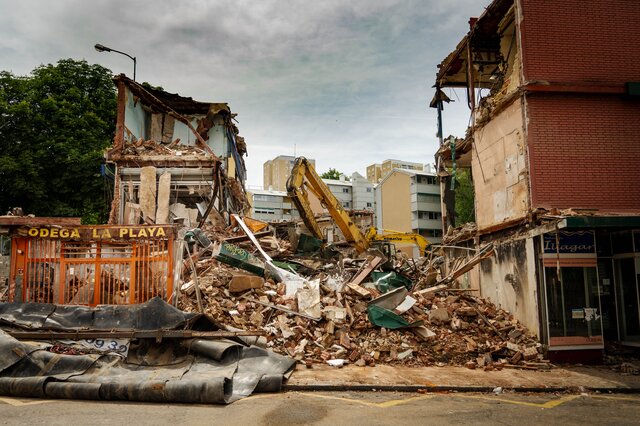Manila – Residents were too afraid to return to their homes as aftershocks rocked a blacked-out northern Philippines on Wednesday, hours after a strong earthquake injured at least 26 people and damaged schools, churches and other buildings.
The 6.4-magnitude quake struck the mountain town of Dolores in Abra province late on Tuesday, cutting power to most of the region. Numerous aftershocks rattled Abra through the night and into Wednesday morning, authorities said.
Rescuers pulled out 10 residents from damaged buildings in Ilocos Norte, where 15 people sustained injuries, authorities said.
President Ferdinand Marcos Jr ordered a school holiday as authorities assessed damaged buildings and said electricity was being restored.
A magnitude 4.7 earthquake jolts Ilocos Norte on Wednesday afternoon, Phivolcs reports.
The agency says damage and aftershocks are not expected. https://t.co/2YBX0YP2Sm
— CNN Philippines (@cnnphilippines) October 26, 2022
A building housing a gallery of photos of the presidency of his father, Ferdinand Marcos Sr, in their home city of Batac was among those damaged.
“People are asking for tents, and the reason why is they are afraid of going back to their houses because of the aftershocks, which could collapse their houses with the foundations weakened,” Marcos Jr told reporters.
Several patients spent most of the night outside two government hospitals in Ilocos Norte after ceilings collapsed on several rooms in one and damaged equipment, officials said.
All patients and staff were safe but the outpatient department of one of the two facilities was closed while the building was being inspected.
Rescuer Ron Sequerra said his family had been woken by strong shaking near the epicentre in Abra.
“We hid under a table and my family only went out of the house after the shaking stopped,” Sequerra told AFP by telephone.
At least 11 people were hurt and 58 classrooms were damaged in Abra, many of them in worst-hit town of Lagayan, provincial disaster officer Arnel Valdez said.
Churches damaged
Workers cleared a Batac road that had been blocked by tumbling boulders, while a number of old churches in Abra and Ilocos Norte also sustained damage, the civil defence office said.
The Lagayan mayor’s office in Abra was closed after it sustained cracks and broken windows, as was a newly built high school already damaged by a strong quake earlier this year.
“We had a room in there with old laptops that toppled like dominoes. The walls and the posts were destroyed. It’s no longer safe to use,” Esterio Apolinar, principal of Lagayan’s Pulot National High School, told AFP.
The spire of an old church in the nearby town of La Paz crumbled, scattering blocks of brick on the courtyard, its parish priest Christian Edward Padua told AFP.
Parish priest Jose Vernon Ilano said a life-size statue of Jesus Christ lay face-down on the floor with its severed right arm nearby at his damaged Catholic church in the Ilocos Norte town of Sarrat.
Ilocos Norte governor Matthew Manotoc, the president’s nephew, told government workers to take the day off while authorities inspected buildings.
All the region’s airports were temporarily closed as runways and other facilities were checked for damage, the civil aviation office said in a statement.
A 7.0-magnitude quake in mountainous Abra in July triggered landslides and ground fissures, killing 11 people and injuring several hundred.
Quakes are a daily occurrence in the Philippines, which sits along the Pacific “Ring of Fire”, an arc of intense seismic and volcanic activity that stretches from Japan through Southeast Asia and across the Pacific basin.
Follow African Insider on Facebook, Twitter and Instagram
Source: AFP
Picture: Unsplash
For more African news, visit Africaninsider.com


